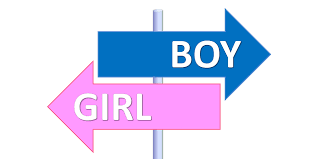Say What? 5 Comments that Reinforce Gender-Stereotypes in the Elementary School Classroom — and How to Respond
- Pink is a girl color.
- Boys have short hair and girls have long hair.
- Girls play with _____ and boys play with _____ .
- Boys don’t wear earrings.
- Only girls wear _____ and only boys wear _____ .
How can teachers work to challenge their students’ ideas about gender-norms? The first step is active listening. Chances are we’ve all heard some child, somewhere make one of the comments listed. It’s what we do in response that will either further reinforce or cause them to question what they believe to be true.

Okay, so you’ve heard one of these statements — and it gave you that uncomfortable feeling in the pit of your stomach. The feeling that accompanies thoughts like, “Wait a minute… That’s not necessarily true. DO something!”
But what? Here are two options, to start:
- Ask a question.
“What makes you say that?”
Oftentimes children (and many adults for that matter) don’t actually know why they’ve said a particular thing when it comes to a fixed idea. That’s the power of it — the stereotype exists and people rarely question it. But you just did — and now they are, too. Way to support the development of critical thinking skills! Give yourself a high five!
2. Make a statement.
“I know lots of girls who like…”
Give an example that challenges the stereotype. It’s likely they’ll be able to come up with examples as well.
You need to be a member of School Leadership 2.0 to add comments!
Join School Leadership 2.0